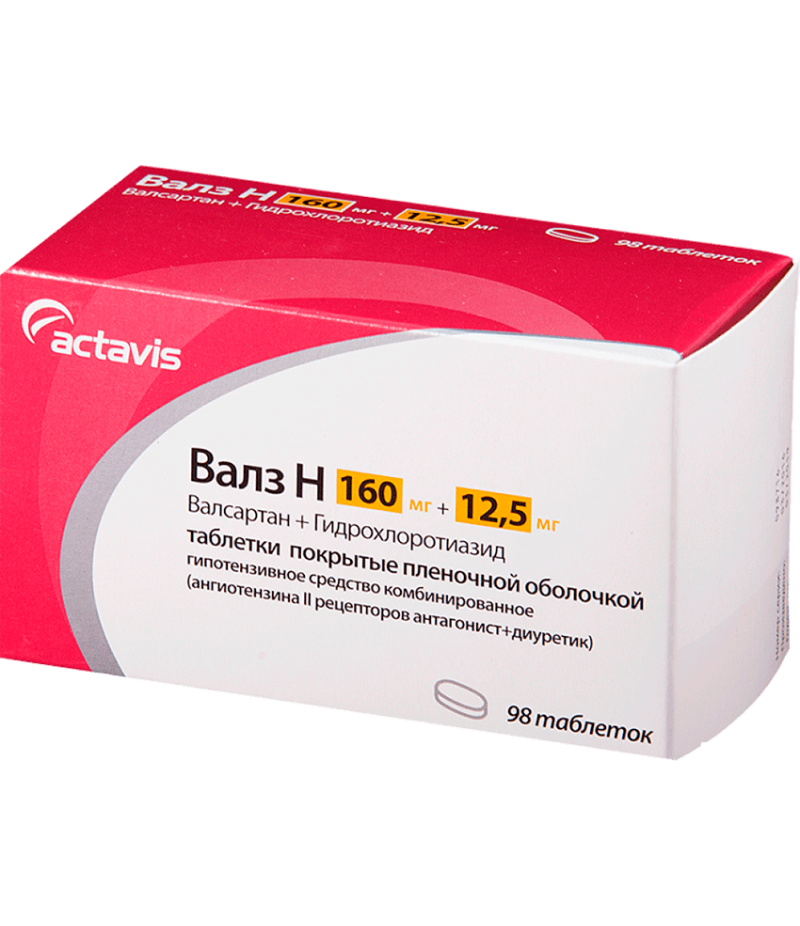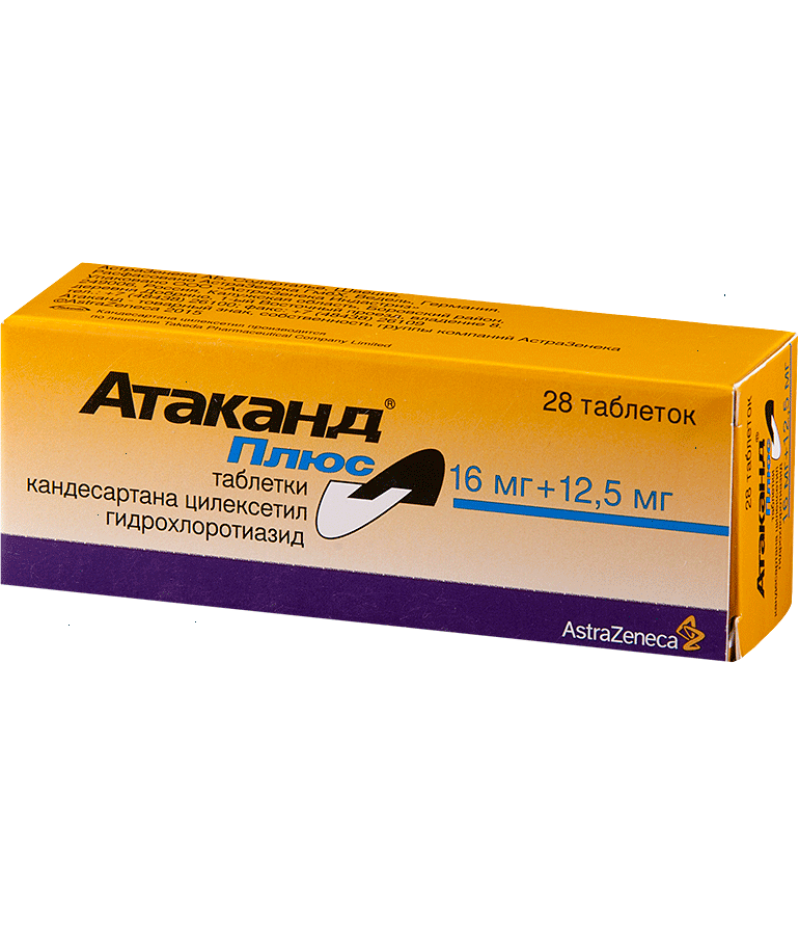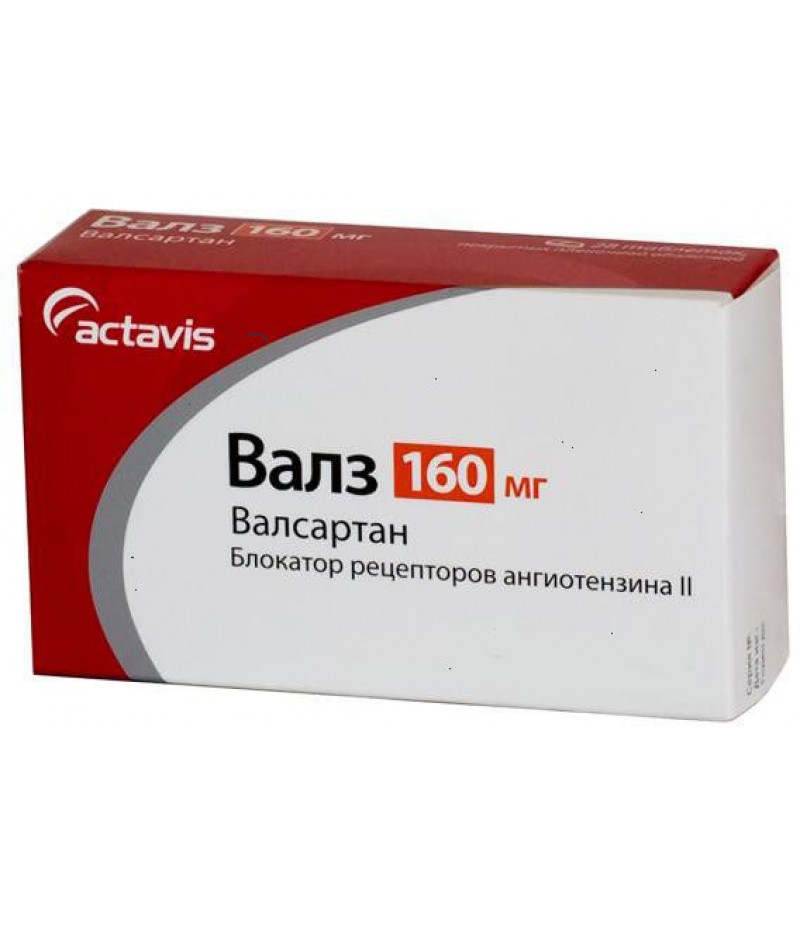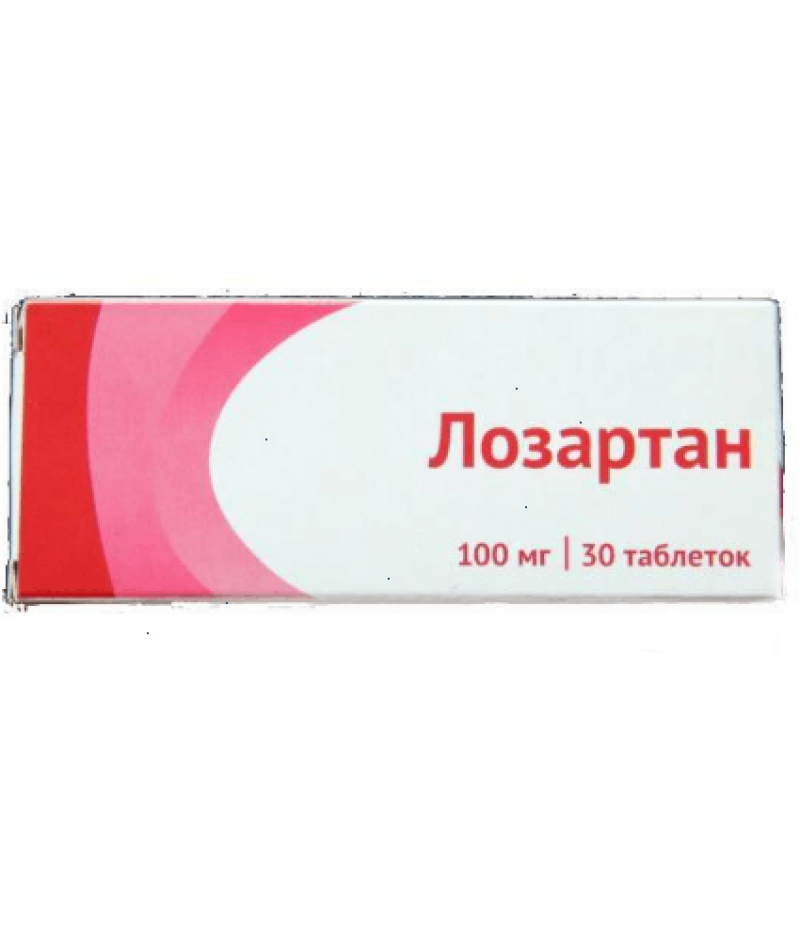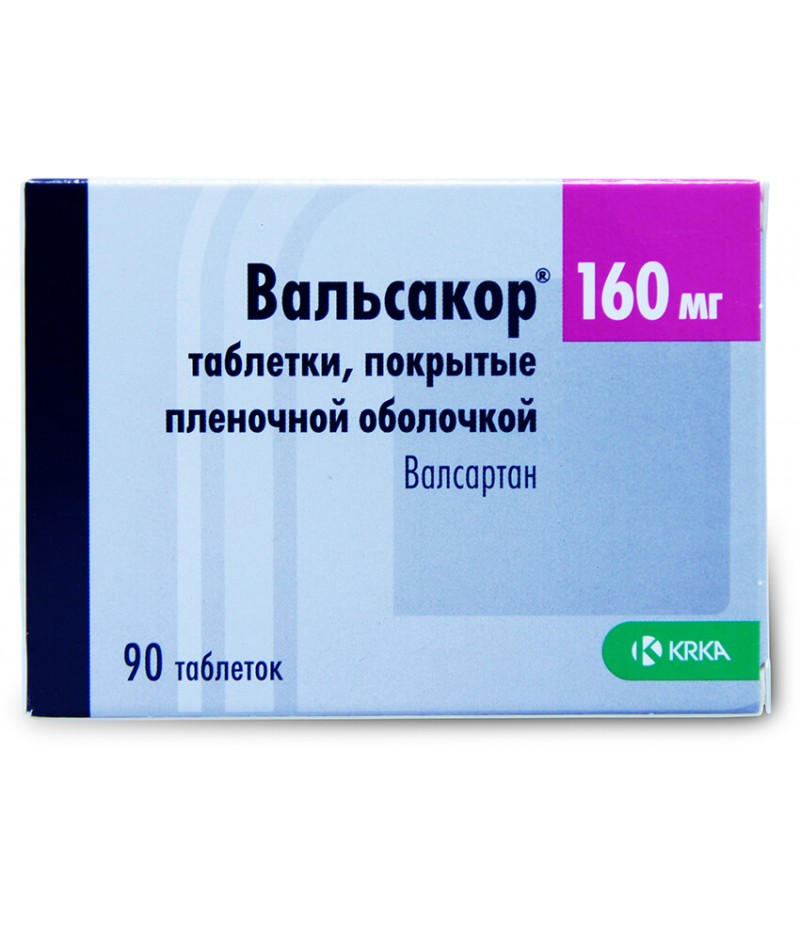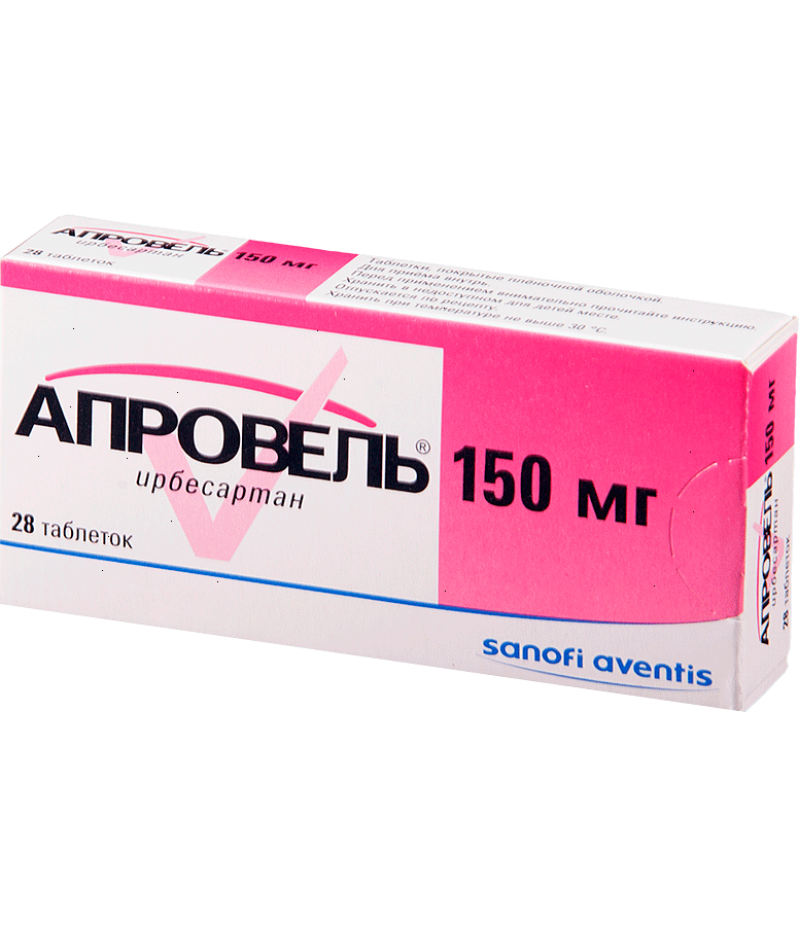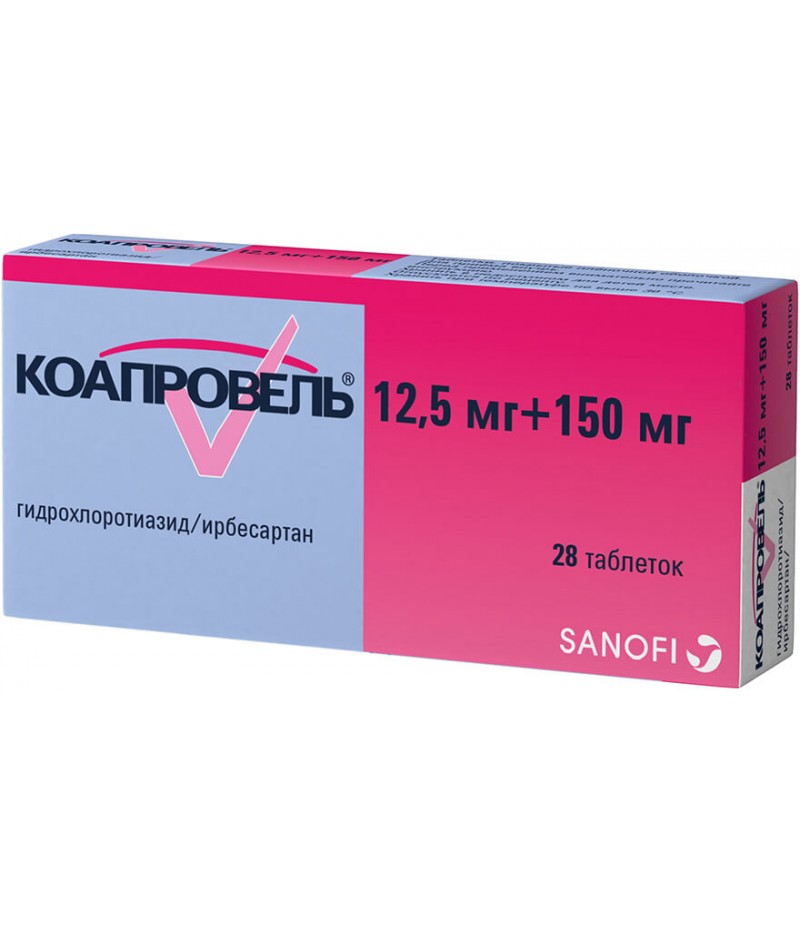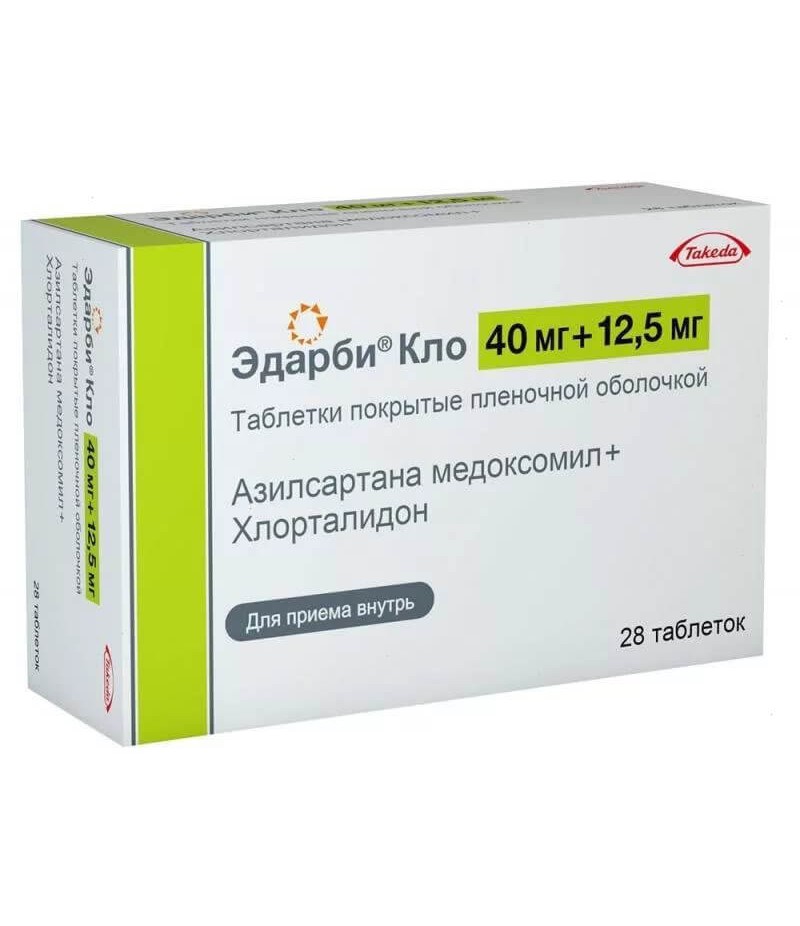Valz H tabs 160mg + 12.5mg #28
- $27.54
- 3 or more $26.99
- Availability:In Stock
Valz H instructionTo buy Valz H just add it to your cartSee also - ValzCompositionThe composition of Valz H includes valsartan and hydrochlorothiazide (active substances), as well as microcrystalline cellulose, lactose monohydrate..
Tags: tabs
Valz H instruction
To buy Valz H just add it to your cart
See also - Valz
Composition
The composition of Valz H includes valsartan and hydrochlorothiazide (active substances), as well as microcrystalline cellulose, lactose monohydrate, povidone K29-32, croscarmellose sodium, magnesium stearate, talc, colloidal silicon dioxide (additional substances).
Form of issue
Valz H is released in the form of tablets (80 mg and 12.5 mg) biconvex, which are covered with a pink film membrane. On one side of the tablet is labeled "V", on the other - "H".
Valz H tablets at a dosage of 160 mg and 12.5 mg look similar, but have a reddish-brown color. Valz H tablets at a dosage of 160 mg and 25 mg look similar, but have an orange color.
Tablets are placed in blisters of 7 pieces, which are packed in a box of cardboard.
pharmachologic effect
Valz H is a combined preparation that exerts an antihypertensive effect on the body. It includes an angiotensin II receptor blocker and a thiazide diuretic.
The substance of valsartan is a peripheral vasodilator, it acts on the body as an antihypertensive and diuretic. Valsartan is a specific blocker of AT1 angiotensin II receptor, it does not inhibit ACE. The substance has no effect on cholesterol, glucose TG, uric acid. With a decrease in blood pressure, the person does not have a change in heart rate.
The substance hydrochlorothiazide is a diuretic of average power. In comparison with furosemide, its diuretic effect is weaker. Under the influence of this substance, the release of potassium in the urine increases, as well as the removal of hydrocarbonates and phosphates.
Hydrochlorothiazide increases the level of magnesium excretion, in the body under its influence, calcium and urate ions are retained. Arterial blood pressure decreases in connection with a decrease in bcc, changes in the reactivity of the vascular wall, an increase in the level of depressor effect on the ganglion, and a decrease in the pressor effect of substances with vasoconstrictive properties.
Pharmacodynamics and pharmacokinetics
The simultaneous use of hydrochlorothiazide and valsartan reduces systemic bioavailability by approximately 30%. This interaction does not affect the overall effectiveness of the use of substances in combination.
Valsartan is rapidly absorbed, absorbed variably. The level of its bioavailability is 23%. The maximum concentration of the substance is noted two hours after the use of drugs. With blood proteins, valsartan binds to 94-97%. Its half-life is 9 hours. It is excreted from the body in the majority in an unchanged form, 70% through the intestine, 30% through the kidneys.
Hydrochlorothiazide after oral administration is absorbed rapidly, its bioavailability is 60-80%. The greatest concentration of the substance is achieved after 2-5 hours. With proteins of the blood plasma, hydrochlorothiazide binds to 60-80%. Its half-life is 6 to 15 hours. It is excreted through the kidneys, with more than 95% coming out unchanged.
The greatest hypotensive effect during treatment with the drug is observed in the first two to four weeks of therapy.
Indications for use
The drug Valz H is appointed for the purpose of treatment of arterial hypertension. Assigned to patients on condition that monotherapy with valsartan is not sufficiently effective. Also, the drug is prescribed to reduce the risk of developing cardiovascular diseases in people suffering from left ventricular hypertrophy and those who suffer from hypertension.
Contraindications
You can not use Valz H for treatment if a person has the following conditions and illnesses:
high sensitivity to the components of the agent;
obstruction of the biliary tract;
biliary cirrhosis;
the state of hypercalcemia, hyponatremia, hyperuricemia, hypokalemia;
anuria;
pregnancy and breast-feeding.
Care should be given to the remedy for stenosis of the renal artery.
Side effects
When treating with Valz H, a number of side effects can be noted, in particular:
feeling tired, dizzy;
nausea, diarrhea;
symptoms of pharyngitis, rhinitis;
viral infections;
hyperkreatinemia, hyperkalemia;
pain in the chest;
arthralgia;
allergic manifestations;
disturbances in the work of the kidneys.
In addition, potential negative reactions with valsartan are insomnia, swelling, asthenia, and a decrease in sexual desire. Hydrochlorothiazide can provoke manifestations of a water-electrolyte balance disorder, a decrease in appetite, hives, a decrease in potency.
Instructions for Use Valves H (Method and Dosage)
Take the drug should be taken orally, regardless of the meal. The tablet should be drunk abundantly. Initially, the patient is assigned to take one tablet (80 mg and 12.5 mg) per day, then, if necessary, Vals H is administered 160 mg. People who have impaired renal function, in the absence of the phenomena of cholestasis, to adjust the dose of the drug Valz H is not necessary.
Overdose
In case of an overdose, there may be a marked decrease in blood pressure.
In this case, the stomach is immediately washed, intravenously, 0.9% sodium chloride solution is administered to the patient. Hemodialysis is effective only with respect to hydrochlorothiazide.
Interaction
With simultaneous therapy, the level of neurotoxicity of salicylates increases, side effects of cardiac glycosides, neurotoxic and cardiotoxic effects of lithium preparations are increased. Also, the effectiveness of curare-like muscle relaxants increases.
Valz H lowers the excretion of quinidine.
With simultaneous treatment, the effectiveness of hypoglycemic oral drugs, antidotal drugs, epinephrine, norepinephrine is reduced.
The frequency of allergic manifestations to allopurinol increases.
Vals H reduces the level of excretion of cytotoxic drugs through the kidneys and increases their myelosuppressive effects.
Preparations that bind intensely in the body to blood proteins (clofibrate, indirect anticoagulants, NSAIDs) increase the diuretic effect.
Strengthening of the hypotensive effect is noted while taking barbiturates, vasodilators, phenothiazines, beta-adrenoblockers, ethanol, tricyclic antidepressants.
Simultaneous reception of Vals H and methyldopa can provoke hemolysis.
Terms of sale
You can buy Valz H without a prescription.
Storage conditions
The product should be stored in a place protected from children's access, where the temperature does not exceed 30 ° C.
Shelf life - 3 years.
special instructions
Before the appointment of a course of treatment, the level of sodium in the blood, BCC, is adjusted.
It is important to monitor the levels of uric acid, potassium, lipids, glucose, creatinine in plasma.
If pregnancy is detected, the course of treatment is immediately suspended.
During therapy, it is sometimes necessary to adjust the dose of insulin or other hypoglycemic agents.
There is evidence that thiazide diuretics can provoke an exacerbation in a person who has systemic lupus erythematosus.
During treatment, it should be borne in mind that Valz H can influence the level of concentration and the speed of psychomotor reactions.
Children
Valz H is not used to treat children and adolescents under 18 years of age.
With alcohol
Under the influence of alcohol, the hypotensive effect of Vals H is enhanced.
In pregnancy and lactation
You can not take Vale H during pregnancy, as well as during the breastfeeding months of the baby.
Reviews about Valz N
Reviews on Valz H 80 mg in the network patients leave mostly positive. In particular, it is noted that Valz H with regular admission effectively lowers blood pressure and allows achieving lasting results. The side effects observed as a result of taking the medication are rarely noted in the reviews.

